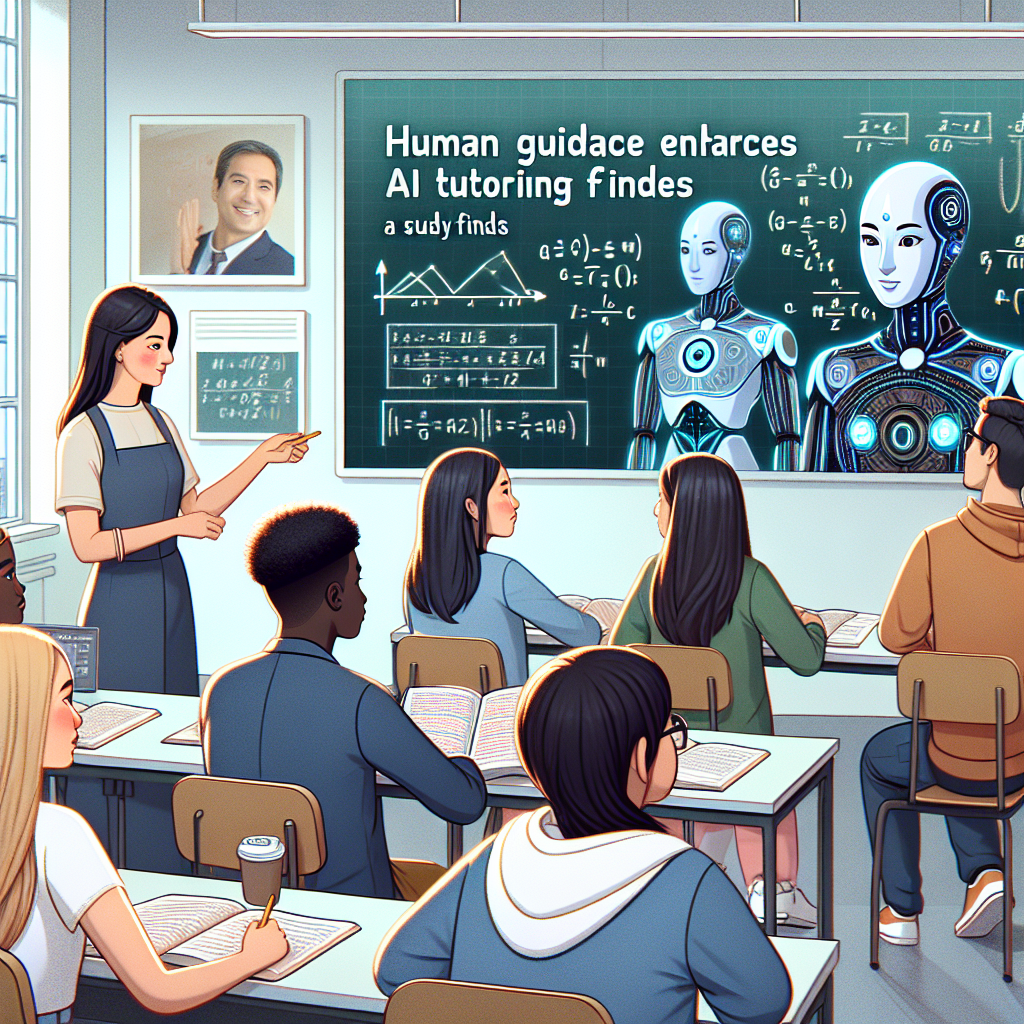
The integration of human guidance into AI tutoring systems presents a promising approach to enhance educational outcomes, as detailed in a recent study conducted by researchers from Carnegie Mellon University, the University of Hong Kong, and Stanford University. This research highlights how leveraging both human and artificial intelligence can significantly improve student performance, particularly in a classroom setting where the personalized interaction of human tutors is blended with the systematic and adaptive capabilities of AI tutors.
The study underlines a critical gap in traditional educational practices where human tutoring has been recognized for its effectiveness but suffers from high costs and scalability issues. In contrast, AI tutors offer a scalable solution, albeit with varying degrees of effectiveness in addressing students’ diverse academic needs. By evaluating a year-long virtual human-AI tutoring program, the researchers found that students paired with both AI and human tutors outperformed those who received solely AI tutoring.
One of the key findings of this research is elucidated by Lee Branstetter, a professor of economics at Carnegie Mellon, who emphasizes the cumulative benefits of human involvement in tutoring. As students engage more over time, their learning progress becomes increasingly pronounced, illustrating how time-on-task can serve as a vital metric for gauging educational effectiveness and identifying students requiring additional support.
The study, which spans over academic performance data from over 350 seventh-grade students, indicates that high-impact human tutoring—characterized by personalized instruction and motivation—combined with the adaptive features of AI tutors, creates an enriched learning environment. This collaboration aims not only to replicate the benefits of traditional tutoring but also to tap into the scalability that AI offers, thus making quality education more accessible.
High-quality human tutoring typically involves structured instructions delivered in small groups or one-on-one settings, thus directly addressing specific learning goals and enhancing overall student engagement. Nonetheless, the high costs associated with hiring human tutors have motivated educational researchers to find effective means to reproduce similar advantages through technological innovations. The current study builds upon this foundational idea, showcasing how human-AI tutoring can indeed serve as a viable alternative.
Jordan Gutterman, a graduate student at Carnegie Mellon who coauthored the study, described these findings as a validation of the collaborative potential between AI systems and human educators. His excitement underscores the real-world implications of the research, as substantial improvements observed within classrooms over an entire school year signal hopeful advancements in the educational landscape.
The comparative assessment conducted in this study, which looked at students during the 2023-2024 academic year against those who previously participated in AI-only tutoring, emphasizes the progressive role of human-AI collaboration in modern education. By merging the strength of human cognitive ability and emotional intelligence with AI’s analytical proficiency, this approach draws closer to fulfilling the educational outcomes traditionally associated with personal tutoring.
In light of the findings, these insights can be instructive for educational institutions, policymakers, and investors interested in the intersection of technology and education. The implications are clear: institutions looking to leverage AI systems for improved educational outcomes may benefit significantly from incorporating human oversight into their tutoring frameworks.
Ultimately, as AI technologies continue to evolve and their applications broaden, embracing an approach that combines human insight with automated systems could lead to more effective educational practices. The collaborative model proposed in this study not only has the potential to reshape educational paradigms but also paves the way for innovations in teaching methodologies that can make learning more engaging, personalized, and effective for students around the world.

Leave a Reply